News
Duxy’s Underwater Photography Blog: Available Light, Part 1
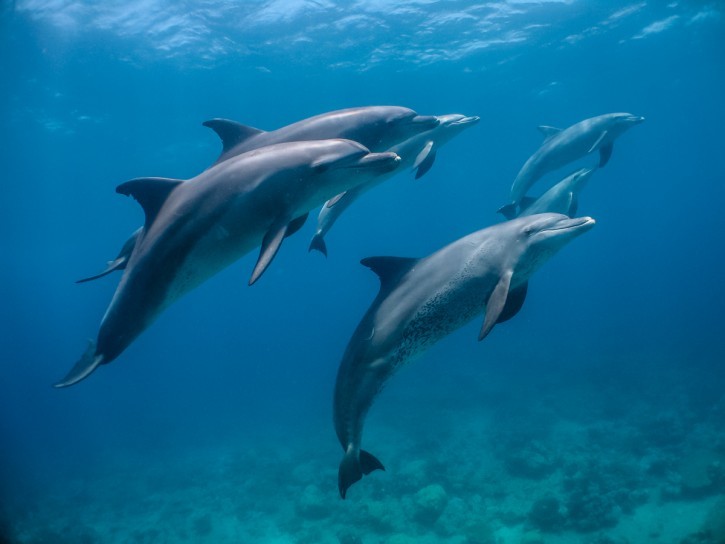
This blog is all about getting back to basics, and learning how to master the art of available light while shooting underwater.
When I first got into underwater photography, I only ever shot available light, eschewing the benefits of strobes until much later. I did this because although I was involved in professional photography onland, I never imagined that I would want or need to be weighed down with too much kit on a dive, so I shot with only a compact camera and a very wide angle lens. This helped me to understand the requirements of the fast growing number of divers keen to document their underwater experiences, for whom diving definitely took first place over photography. This coincided with the compact digital photography market place starting to produce very capable small point and shoot cameras, with useful functions for underwater use.
And so I started to champion this style of unhindered shooting as a great way for all divers to get great pictures, and my first articles were all about how to do this effectively and with the minimum of expense and equipment.
I have since also embraced the use of strobes too, but this style of minimalist photography is still enormously appealing.
This shot below was taken on my first ever Liveaboard trip nearly 9 years ago with a digital camera and using an add on fisheye lens with an old Canon Ixus compact camera, and this was the moment when I realised that this “new fangled” technology had some enormous benefits over the bulkier, strobe laden kit of the past.
Go Wide
So, what first to think about with available light shooting?
I would personally suggest that you think very seriously about tricking out your camera with a very wide angle lens.
If shooting with a compact camera, and your camera is a compatible one, then the lens as it is will be fine if you are shooting fish ID shots of the usual reef denizens.
However if you want to get good colours and great shots of larger things, like the dolphins in the main photo above, or clear shots of wrecks or reefscapes, then you need to go much wider than the camera will go with its built in lens.
Why is this?
Well the medium within which we choose to indulge our hobby, even at its clearest, is much denser than air, and colour contrast and clarity will drop off very quickly as you increase the distance between you and the subject. Those dolphins above were around a metre or so from me, which is one of the reasons you can make out the finer details in the shot.
And if I had been using the camera unenhanced without a lens attached that had nearly 180 degrees of view, then to get this group all in shot I would have needed to have been around 10 metres or so away.
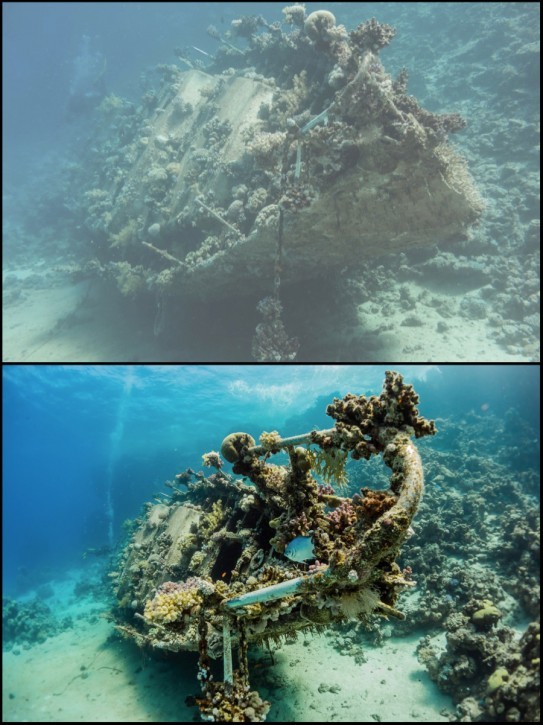
Both pictures were taken with the same compact camera. The top shot was just the camera on its own. And to frame it like this I had to be around 5m away. However with the wider angled lens attachment I am now only a meter away for the shot at the bottom. Which is much clearer and sharper simply because I am a lot closer.
Get Close
Getting close to your subject is the key element here, and if it’s a larger subject like a wreck or a reefscape, pod of dolphins or your buddy even, then the only way that the shot is going to be as clear as the shots you see in the magazines is if you are using a wide angle lens much wider than you may be accustomed to. These attach using simple adapters or screw into the front of your housing, and really expand on your underwater photographic possibilities.
If you are in the market for a simple compact camera and want better than average results in these scenarios then please get in touch at duxy@scubatravel.com and I will give you the current up to date advice on what the best choices are for underwater. Sadly just because a camera is great on land doesn’t automatically make it suitable for underwater use.
Of course this simple physics issue also applies to higher end cameras like DSLR’s or Mirrorless cameras, but generally those folk have already come to that understanding as they have travelled up the learning curve, and purchased the relevant lenses and equipment.
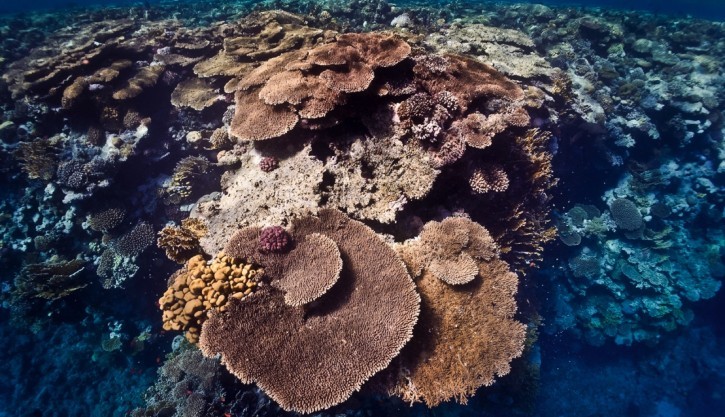
The top of Shark Reef in Egypt only possible to get in and keep clear and colourful by using a very wide angle lens and a technique called Custom or Manual White Balance.
Banishing the Blues in Part 2
The shot above was taken with a fisheye lens attached to one of the early Mirrorless cameras, and what I have explained above is one of the reasons the shot is clear and showing good contrast. However in the second part of this series I will be showing you how to get the great colours we associate with this type of shot, by using a variety of techniques to remedy the boring blues that blight a lot of available light for underwater photographers.
[hr style=”single”]
 Duxy is the in house photo-pro for UK-based dive tour operator Scuba Travel. To find out about availability on Scuba Travel’s underwater photography workshops hosted by Duxy click here.
Duxy is the in house photo-pro for UK-based dive tour operator Scuba Travel. To find out about availability on Scuba Travel’s underwater photography workshops hosted by Duxy click here.
Marine Life & Conservation Blogs
Book Review: Shells of the World

Shells of the World: A Natural History by M.G. Harasewych
Shells of the world is a guide to the world of marine, shelled molluscs. And what a varied and interesting world it is. Some of my favourite things to find on a dive are detailed in this book, including disco clams (or Electric File Clams as they are correctly names), the cephalopods, giant clams and sea hares. There are also many on my wish list, top of which is the Nautilus.
Each chapter provides a detailed description of the species, along with beautiful images. You can dive deeper and discover where they live, both with global distribution and the habitat they prefer. Learn about their diet, reproduction and diversity.
Having dipped in and out of this lovely book over the past few weeks, it has inspired me to learn more about this group of animals that we see on most divers, wherever we are in the world. Some of the shells are incredibly intricate and beautiful. I have always agreed with never collecting, or touching, marine life. The description of a certain set of cone shells should be a warning to those that are happy to pick up marine life! One of the cone shells has a local name called the cigarette snail. Why? Because once the venom is in your system from this animal, you only have time to smoke one cigarette before the affects of the venom are fatal!
What the publisher says:
Mollusks are invertebrate animals with a remarkable natural history and a rich fossil record, and their shells are prized for their breathtaking variety and exquisite beauty. Shells of the World provides a wide-ranging look at the incredible diversity of marine mollusks. An informative introduction outlines the lineages covered, followed by a directory section, split into classes, that profiles a broad selection of different taxa to give a sense of their sheer numbers and variety.
- Features hundreds of beautiful color photos, depicting both the live animals and their shells
- Discusses mollusk evolution, anatomy, life cycles, behavior, and ecology
- Describes unique characteristics, distribution, habitat, and size
- Provides valuable insights into the conservation of the world’s marine mollusks
- Ideal for malacologists and shell collectors everywhere
About the Author:
M. G. Harasewych is research zoologist emeritus and former curator in the Department of Invertebrate Zoology at the Smithsonian Institution’s National Museum of Natural History. A fellow of the American Association for the Advancement of Science, he is the author (with Fabio Moretzsohn) of The Book of Shells: A Life-Size Guide to Identifying and Classifying Six Hundred Seashells.
Book Details
Publisher: Princeton University Press
Hardcover
Price: £25
ISBN: 9780691248271
Published: 9th April, 2024
Gear News
Go anywhere with Stahlsac
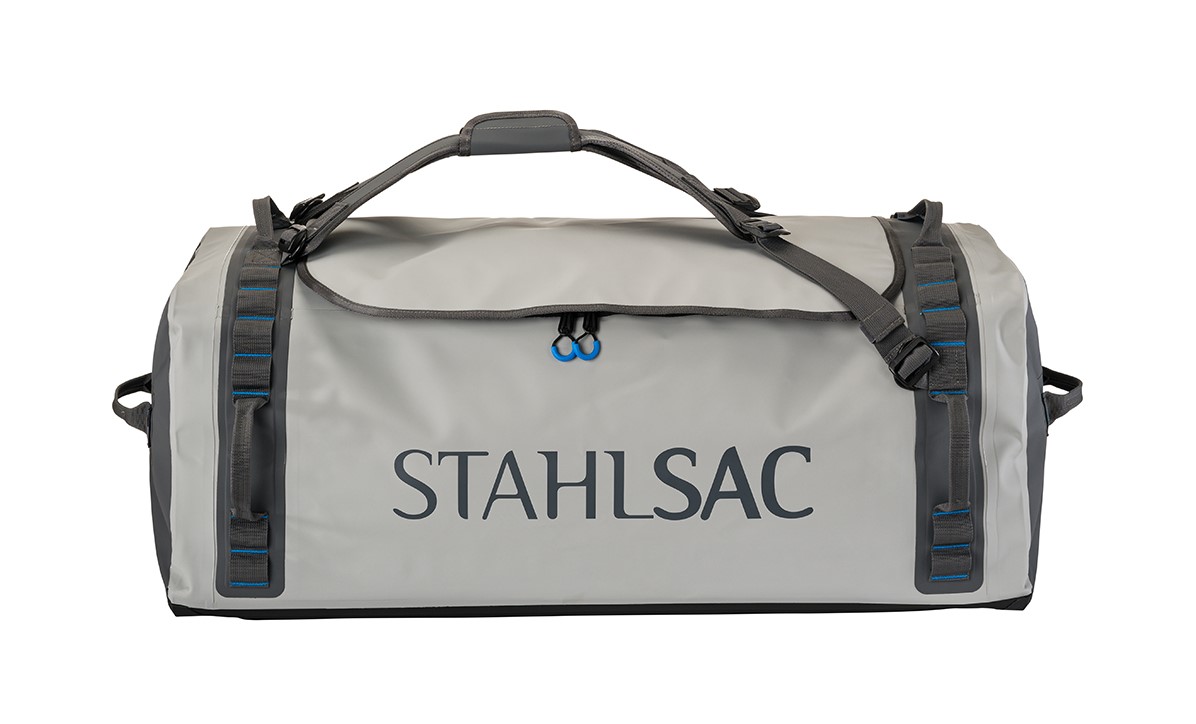
Stahlsac dive bags and travel luggage are built for our community of divers, surfers, kayakers and outdoor explorers who need bags that are constructed with durability, toughness, and 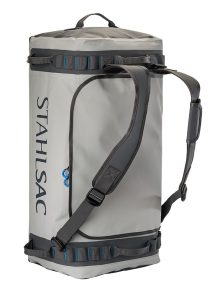 the highest quality the industry has ever seen. We were founded by one man determined to build better watersports and dive bags, and today, that mission is carried on by many. Adventure doesn’t just present itself; it requires discovery. When we design dive bags, we make sure they are tough enough for you to explore in all conditions—warm and cold, wet and dry—to the nearest and farthest reaches of the earth. And for those times you want to push the boundaries of adventure, Stahlsac dive bags make sure you can truly GO ANYWHERE.
the highest quality the industry has ever seen. We were founded by one man determined to build better watersports and dive bags, and today, that mission is carried on by many. Adventure doesn’t just present itself; it requires discovery. When we design dive bags, we make sure they are tough enough for you to explore in all conditions—warm and cold, wet and dry—to the nearest and farthest reaches of the earth. And for those times you want to push the boundaries of adventure, Stahlsac dive bags make sure you can truly GO ANYWHERE.
Abyss Duffels
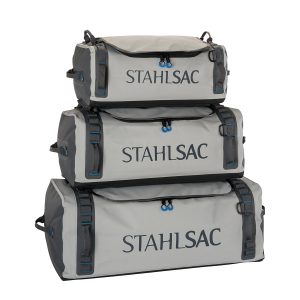 Made to be your partner-in-crime on every adventure, Stahlsac’s Abyss Duffels protects your gear from Mother Nature’s worst. Tough and 100% waterproof with double-TPU nylon material that shrugs off daily wear-and-tear, and RF-welded seams further boost the bag’s potential for lifelong exploring. Get Wet. Get Lost. Go Anywhere with Abyss.
Made to be your partner-in-crime on every adventure, Stahlsac’s Abyss Duffels protects your gear from Mother Nature’s worst. Tough and 100% waterproof with double-TPU nylon material that shrugs off daily wear-and-tear, and RF-welded seams further boost the bag’s potential for lifelong exploring. Get Wet. Get Lost. Go Anywhere with Abyss.
- A weatherproof duffel for trips, travel, and adventure
- Ultra-durable double-TPU nylon protects your gear
- Material repels water and keeps your equipment dry
- RF-welded seams are flush, tough, and waterproof
- Removable straps transform duffel into backpack
- Zippered internal stow compartments carry essentials
- External zippered flap is easy to open and close
- Welded external handles make transporting a breeze
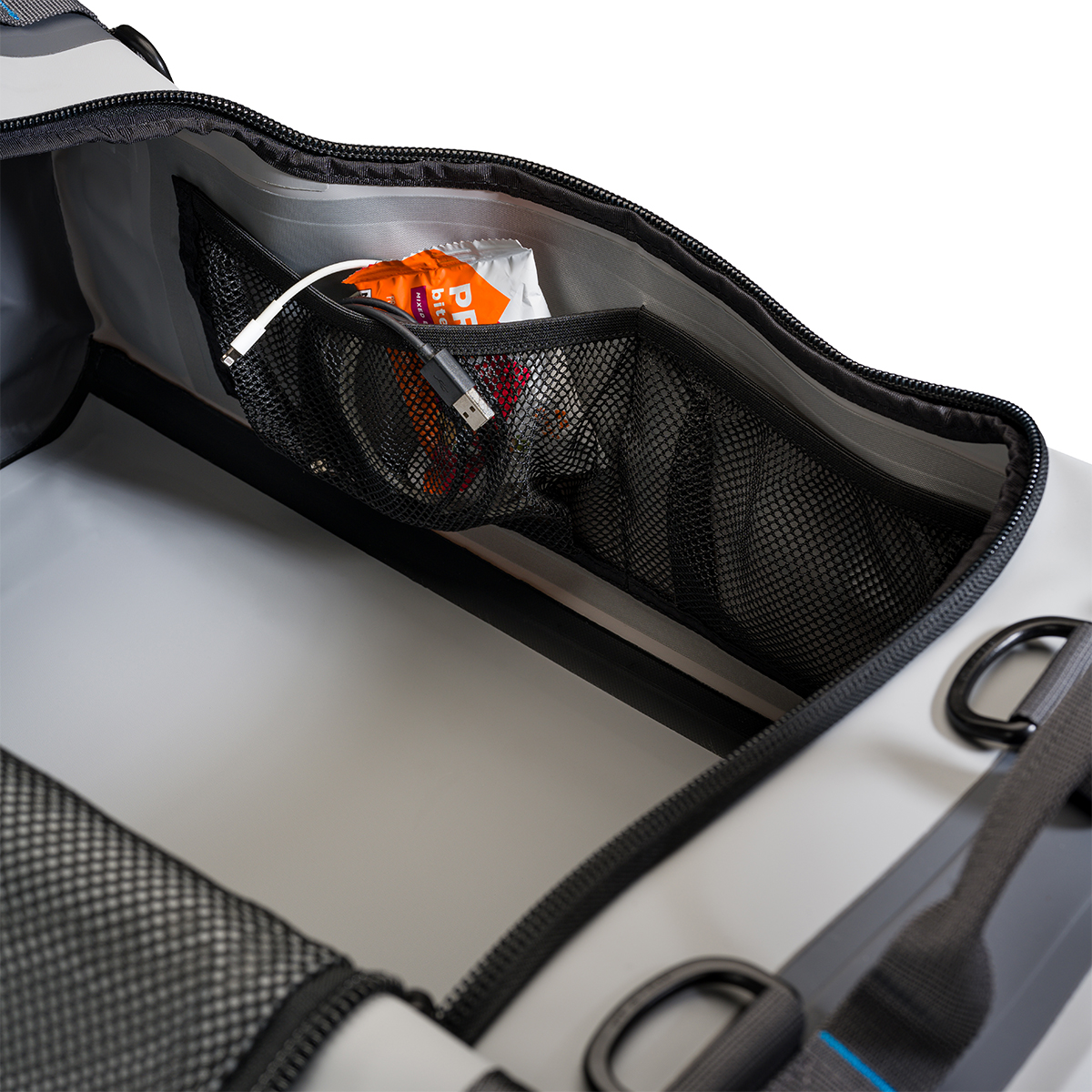
Panama Mesh Backpack
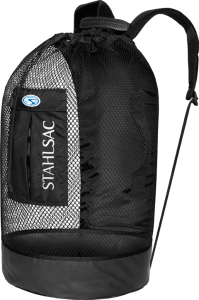 The most copied design in scuba diving, the Stahlsac Panama Mesh Backpack is the “original” design and features two high-density foam padded shoulder straps, extra durable polyester mesh, duffel bag handles and our unique zippered dry pocket inside that combines with a wet pocket outside. The bottom’s built from reinforced 18-gauge PVC nylon to combat the wear and tear of your active coastal lifestyle, and, as a bonus in every bag, we supply a 12″ x 12″ mesh drawstring satchel for extra stowing utility. Pack up your beach kit and go.
The most copied design in scuba diving, the Stahlsac Panama Mesh Backpack is the “original” design and features two high-density foam padded shoulder straps, extra durable polyester mesh, duffel bag handles and our unique zippered dry pocket inside that combines with a wet pocket outside. The bottom’s built from reinforced 18-gauge PVC nylon to combat the wear and tear of your active coastal lifestyle, and, as a bonus in every bag, we supply a 12″ x 12″ mesh drawstring satchel for extra stowing utility. Pack up your beach kit and go.
- Density foam padded shoulder straps
- Outside wet/dry pockets
- 2 Carry handles
- Tough, snag-resistant polyester mesh
- Reinforced PVC bottom
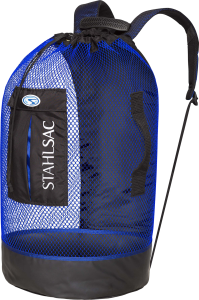
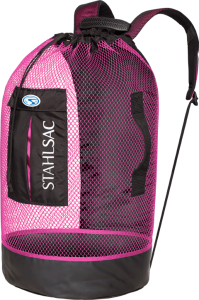
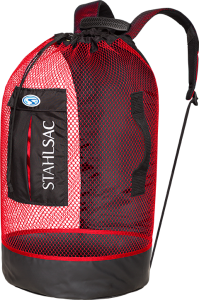
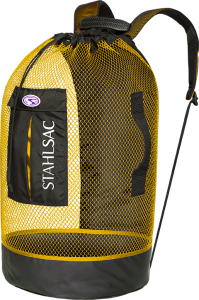
For more information about Stahlsac bags, visit www.stahlsac.com/dive-bags.
Sea & Sea is the home of Stahlsac and other leading diving brands in the UK.
-

 Marine Life & Conservation Blogs3 months ago
Marine Life & Conservation Blogs3 months agoCreature Feature: Swell Sharks
-

 Gear Reviews4 weeks ago
Gear Reviews4 weeks agoGEAR REVIEW – Revolutionising Diving Comfort: The Sharkskin T2 Chillproof Suit
-

 Blogs2 months ago
Blogs2 months agoMurex Resorts: Passport to Paradise!
-

 Blogs3 months ago
Blogs3 months agoDiver Discovering Whale Skeletons Beneath Ice Judged World’s Best Underwater Photograph
-

 News3 months ago
News3 months agoPADI Teams Up with Wellness Brand Neuro to Drive Ocean Change and Create a Blue State of Mind
-

 Gear Reviews3 months ago
Gear Reviews3 months agoGear Review: Oceanic+ Dive Housing for iPhone
-

 Marine Life & Conservation2 months ago
Marine Life & Conservation2 months agoSave the Manatee Club launches brand new webcams at Silver Springs State Park, Florida
-

 Blogs2 months ago
Blogs2 months agoSeagrass Awareness Month brings critical food source for Manatees to centre stage






